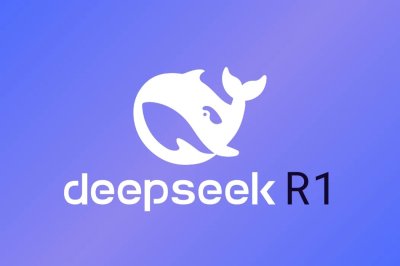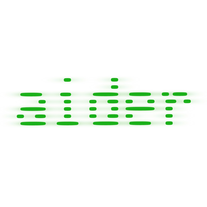JACoB
The AI-powered coding agent enhancing your workflow
AI Coding Assistance Code Review Bug Identification Security Risk Analysis Code Generation Open SourceTool Information
| Primary Task | Coding |
|---|---|
| Category | technology-and-development |
| Sub Categories | coding-assistants bug-tracking cybersecurity |
| Open Source | Yes |
| Pricing | Free |
JACoB is an open-source, AI-powered coding agent designed to augment the capacity of programming teams by assisting in the writing, review, and integration of production-level code. It is capable of mapping a full codebase and learning the coding patterns of a team to generate consistent and high-quality code that aligns with their specific use cases and standards. In addition to code writing, this tool reviews codes intelligently and proactively identifies bugs, security risks and areas for improvements. JACoB is designed to integrate seamlessly with existing GitHub repositories and Figma designs, and performs mundane task automation, allowing developers to focus on innovative tasks. Being an open-source tool allows you to inspect and modify JACoB to accommodate your precise needs. Further, JACoB is configurable to comply with your specific rules, the configuration settings can be done in a JSON file in your codebase. The bot continuously learns from your codebase to ensure that its contributions become more effective over time. Furthermore, JACoB not only suggests snippets of code but can handle complete development tasks from start to finish including writing, reviewing, and testing of code.
| Pros |
|---|
|
| Cons |
|---|
|
Frequently Asked Questions
1. What is JACoB?
JACoB, the abbreviation for Just Another Coding Bot, is an AI-powered coding agent that enhances the capabilities of programming teams. It is open-source, which means its source code is freely available for inspection and modification. JACoB aids in drafting, reviewing, and assimilating production-level codes, mapping the complete codebase, learning the coding patterns of a team, and generating consistent, high-quality code.
2. What is the purpose of JACoB?
The purpose of JACoB is to augment the potential of programming teams by streamlining the writing, review, and integration of production-level code. It's designed to lighten the load of routine tasks, learn and reproduce team-specific coding patterns, and provide intelligent code review, thereby helping teams focus more on innovation and less on task management.
3. How does JACoB improve the programming process?
JACoB improves the programming process in numerous ways. It maps a full codebase, thereby gaining an understanding of the team's coding patterns. This knowledge enables JACoB to generate high-quality code that aligns with the team's specific use cases and coding standards. Furthermore, JACoB performs intelligent code reviews, pinpointing bugs, security risks, and areas for improvement. In addition to enhancing code quality, JACoB integrates with existing GitHub repositories and Figma designs, and helps automate routine tasks, freeing up developers to focus on innovation.
4. How does JACoB learn from a team's coding patterns?
JACoB learns from a team's coding patterns by mapping the full codebase. This extensive analysis allows it to understand the coding patterns, nuances, and standards used by a given team, facilitating its capacity to generate compatible and high-quality code. Its learning capabilities evolve over time, progressively becoming more effective in its contribution to the codebase.
5. What types of bugs and security risks can JACoB identify?
JACoB is equipped to identify a wide spectrum of bugs and security risks within a codebase. While the specific types are not mentioned, it's reasonable to assume that JACoB is capable of detecting common bugs and security pitfalls—a capacity that becomes more refined as it continues to learn from the codebase.
6. Can JACoB integrate with existing GitHub repositories and Figma designs?
Yes, JACoB is designed to integrate smoothly with existing GitHub repositories and Figma designs. Such seamless integration enables it to automate routine tasks and enhance the programming workflow effectively.
7. How does JACoB automate mundane tasks?
JACoB automates mundane tasks by integrating directly into the existing workflow of a team. Synchronizing with GitHub repositories and Figma designs, it takes up tasks like design conversion, code review, bug detection, security analysis etc., thereby allowing developers to focus on innovation and complex problem-solving.
8. Can JACoB be modified to meet specific needs?
Being an open-source tool, JACoB indeed can be modified to meet specific needs. This means that developers can inspect its source code and make necessary modifications to accommodate their precise requirements.
9. How is JACoB configured to comply with specific rules?
JACoB is configured to comply with specific rules through a JSON file in the codebase. Developers can define their specific rules or preferences in this JSON file, and JACoB will adapt accordingly.
10. Does JACoB suggest code snippets or handle complete development tasks?
JACoB stands out in its ability to not only suggest snippets of code, but also to handle complete development tasks from start to finish. This includes writing, reviewing, testing of code, thereby offering a comprehensive, end-to-end solution.
11. What makes JACoB different from other AI coding agents?
Several features make JACoB stand out from other AI coding agents. While similar tools might suggest code snippets, JACoB handles entire development tasks from start to finish. It customizes to a team's specific coding style and standards, reviews and identifies issues in the code, and can be completely adjusted through a JSON file in the codebase. Meanwhile, its open-source nature invites developers to inspect and modify its operations as per their needs.
12. How can JACoB accelerate software development?
JACoB accelerates software development by bringing efficiency and automation into the workflow. It maps the complete codebase, learns the team's coding patterns, and generates consistent, high-quality code. It intelligently reviews code, identifies potential bugs and security risks, and areas of improvement. Further, by seamlessly integrating with Github repositories and Figma designs and tackling routine tasks, JACoB enables developers to focus more on innovation.
13. What aspects of a codes does JACoB review?
JACoB reviews a variety of aspects in code to enhance its quality. It proactively identifies bugs, potential security risks, and areas that can be optimized or improved. While it's not mentioned explicitly what these areas of improvement could be, it's safe to assume they encompass general principles of good coding practice, such as code efficiency, readability, and maintainability.
14. How secure is using JACoB?
JACoB seems to put a high priority on security. It can function either locally or via secure hosted containers. Its open-source nature also allows for source code inspection, which means developers can assess its security measures and make any necessary modifications.
15. Does JACoB require local setup or it works via hosted containers?
Yes, JACoB allows for both local and hosted container operation. This provides flexibility for teams depending on their specific workflow and security requirements.
16. Can JACoB handle project management tasks?
While not explicitly identified as a project management tool, JACoB exhibits many capabilities that align with managing software projects. It takes tasks from start to finish including writing, reviewing, and testing of code. Its integration with GitHub repositories also suggests some engagement with managing tasks and tracking issues.
17. How does JACoB handle codebase mapping?
JACoB handles codebase mapping by scanning and understanding the entire codebase of a project. This allows JACoB to learn the team's coding patterns and generate consistently high-quality code that aligns with their specific standards and use cases.
18. What improvements does JACoB suggest for code quality?
JACoB suggests improvements for code quality by intelligently reviewing the codebase. It proactively identifies bugs, security risks, and areas that need enhancements. These suggestions could relate to improving code efficiency, solving security vulnerabilities, or fixing areas that violate good coding standards.
19. Is the configuration settings for JACoB in JSON file format?
Yes, the configuration settings for JACoB are in JSON file format. You can define your specific rules and preferences in this JSON file, and JACoB will adapt its operations accordingly.
20. Can JACoB be integrated in my current workflow from day one?
Yes, JACoB is designed to be integrated into existing workflows from day one. It's adaptable to your tools and preferences, and its easy configuration and ability to automate tasks from the get-go makes the integration process easier for teams.
Comments
Similar Tools
Related News

In a stunning testament to the accelerating pace of artificial intelligence innovation, a new challenger has rapidly ascended t...
@devadigax | Sep 29, 2025

Anthropic, a leading AI research and safety company, has made a significant stride in the artificial intelligence landscape wit...
@devadigax | Sep 29, 2025

Redmond, WA – In a move set to redefine workplace productivity, Microsoft has officially launched a groundbreaking new feature,...
@devadigax | Sep 29, 2025

The digital landscape is in constant flux, but few forces are reshaping it as profoundly as Artificial Intelligence. While AI ...
@devadigax | Sep 28, 2025

Clarifai, a leader in AI infrastructure and platform solutions, has announced the release of its new reasoning engine designed ...
@devadigax | Sep 25, 2025

Google has officially launched its AI Mode feature in Spanish, making its advanced language capabilities accessible to a vast ...
@devadigax | Sep 23, 2025
 AI Tool Buzz
AI Tool Buzz
 Aider Chat
Aider Chat Code Snippets AI
Code Snippets AI